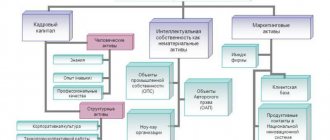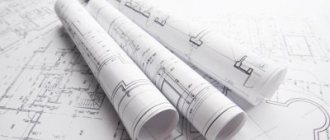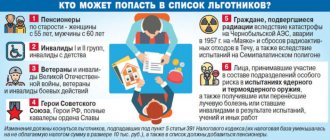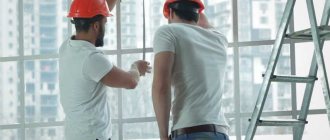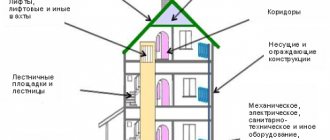From this article you will learn:
- Differences between current and major repairs according to 44-FZ
- Procurement algorithm for major repairs under 44-FZ
- Estimate instead of design documentation for major repairs according to 44-FZ
Until recently, the procurement system for major repairs under 44-FZ was one of the most complex due to the significant volume of various regulations. On July 1, 2021, significant changes came into force, which were intended, among other things, to simplify this procedure.
However, not all so simple. And even the formal simplification of the participant’s application to just consent does not guarantee that you will not have to face difficulties when purchasing for major repairs under the law 44-FZ.
The concept of “current repairs”
A special feature of routine repairs is the prevention of serious damage or emergency situations. It is designed to maintain utility lines, roofing, and structural elements of apartment buildings (MCD) in proper condition.
Current repairs are carried out by homeowners' associations, management companies, housing cooperatives according to a plan previously drawn up for several years and carried out systematically. For example, every year before starting up the heating system, a test heat supply and repair of elements that have leaked are carried out. Every spring, current repairs of the local area are carried out, and in the summer, roof elements are replaced or restored.
7 rules for choosing a repair team
Look
Emergency and dilapidated housing and resettlement from it
Go
The concept of "overhaul"
Overhaul is a complex of much more in-depth measures, involving large investments and carried out no more than once every 15-25 years.
Emelyanenko Natalya Leonidovna
Worked as a legal assistant in a law firm for 6 years
Ask a Question
Its main task is to bring the current state of the MKD as close as possible to the new state. In this case, major repairs can be selective or comprehensive. In the first case, for example, the roof and the arrangement of the blind area will be subject to replacement. The second includes a complete reconstruction of engineering systems, roof replacement, facade work, replacement of doors and windows.
Differences between the two types of work
The main differences between current repairs and major repairs:
- replacement of the roof by no more than 50%;
- replacement of engineering or other structures - no more than 15% of the total volume of MKD;
- frequency - at least once a year;
- relatively low cost;
- no radical changes.
The main types of current repairs of apartment buildings include:
- strengthening and repairing part of the foundation, installing or restoring a blind area;
- repair of rafters, repair of gutters, replacement or strengthening of part of the roof;
- painting the facade, repairing joints, eliminating deformations;
- repair of current damage to elevator equipment;
- replacement of individual window and door structures, repair of door closers, replacement of glazing;
- partial repair or replacement of utilities (pipes and heating radiators, drainage and water supply systems, electrical wiring, gas equipment).
During the ongoing repairs, sidewalks and lawns in the local area will be restored, children's playgrounds, and passageways for vehicles will be improved.
The main tasks of the overhaul:
- complete repair of the upper part of the MKD foundation;
- replacement of rafters, all or most of the roof, sealing, insulation;
- the facade is subject to complete finishing or decoration with other materials (paneling, replacement of balcony elements);
- replacement or complete repair of elevator equipment and shaft;
- complete replacement of doors and windows;
- restoration or complete replacement of utilities.
During a major overhaul, the local area is subject to complete restoration - replacement of the road surface, playground, fences, arrangement of parking lots, replacement or restoration of street lighting.
Federal Law “Technical Regulations on the Safety of Buildings and Structures” dated December 30, 2009 N 384-FZ (latest edition) in Article 2 “Basic Concepts” defines the life cycle of a building or structure - this is the period during which engineering surveys, design, construction (including conservation), operation (including current repairs), reconstruction, major repairs, demolition of a building or structure.
At the same time, if we consider the cost indicators of the stages of the life cycle of a building or structure, we can see that the main funds are spent during the period of operation of the facility.
- Design ~ 6%
- Construction ~15%
- Operation ~75%
- Recycling ~4%
According to Article 1 of the Urban Planning Code of the Russian Federation in its latest edition dated December 31, 2017, the concepts of major repairs, reconstruction of capital construction projects, operation of buildings, structures, and landscaping of territories refer to urban planning activities.
Accordingly, the entire document flow during construction and installation work during the operation of the facility - design, estimate documentation, acceptance certificates for work performed, etc. must comply with the requirements of the Ministry of Construction and Housing and Communal Services of the Russian Federation.
The previous article discussed issues related to the reconstruction (reconstruction and re-equipment) of buildings and structures, their features and differences. Definitions of the concepts of capital repairs of objects (linear and non-linear) were also given.
In connection with the pricing reform in construction, Federal Law No. 369-FZ of July 3, 2021 introduced the obligation to verify the accuracy of the estimated cost of capital repairs of capital construction projects that are financed using funds from the budget system.
The regulatory document when checking the reliability of the estimated cost is Resolution of the Government of the Russian Federation No. 427 “REGULATIONS ON CHECKING THE ACCURACY OF DETERMINING THE ESTIMATED COST OF CONSTRUCTION, RECONSTRUCTION, MAIN REPAIRS OF CAPITAL CONSTRUCTION FACILITIES, WORK TO PRESERVE FACILITIES CULTURAL HERITAGE (HISTORICAL AND CULTURAL MONUMENTS) OF THE PEOPLES OF THE RUSSIAN FEDERATION, FINANCING IS CARRIED OUT WITH THE ATTRACTION OF FUNDS FROM THE BUDGETS OF THE BUDGET SYSTEM OF THE RUSSIAN FEDERATION...” dated May 18, 2009, in which in 2021, also in connection with the pricing reform in construction, appropriate changes were made regarding capital repair projects.
Clause 1 of this provision reads:
"1(1). The estimated cost of major repairs of capital construction projects is subject to verification if such major repairs include:
a) replacement and (or) restoration of all types of building structures (except for load-bearing building structures) or replacement and (or) restoration of all building structures (except for load-bearing building structures) in combination with the replacement of individual elements of load-bearing building structures with similar or other improving ones indicators of such construction elements and (or) restoration of these elements;
b) replacement and (or) restoration of all types of engineering support systems or all types of engineering support networks;
c) a change in all parameters of a linear object, which does not entail a change in the class, category and (or) initially established indicators of the functioning of such an object and which does not require a change in the boundaries of the right of way and (or) the security zone of such an object.
1(2). If the overhaul does not include the work specified in paragraph 1(1) of these Regulations, the decision to submit to the organization for checking the estimated cost of documents for checking the estimated cost of overhaul of capital construction projects is made on an initiative basis:
the head (an authorized head in the prescribed manner, a deputy head or an official authorized by the head to distribute limits of budget obligations) of the main manager of federal budget funds - in relation to federal property, the main manager of budget funds of a constituent entity of the Russian Federation - in relation to state property of subjects of the Russian Federation, the main manager of local budget funds - in relation to municipal property;
the head of a legal entity created by the Russian Federation, a constituent entity of the Russian Federation, a municipal entity, a legal entity, the share of the Russian Federation, a constituent entity of the Russian Federation, a municipal entity in the authorized (share) capital of which is more than 50 percent - in relation to the objects of such a legal entity, major repairs which are carried out without attracting funds from the budgets of the budget system of the Russian Federation;
the head of a legal entity that is not a state or municipal institution, a state or municipal unitary enterprise - in relation to the objects of such a legal entity, the overhaul of which is financed using funds from the budgets of the budgetary system of the Russian Federation.
1(3). The estimated cost of work to preserve cultural heritage objects is subject to verification if such work affects the structural and other characteristics of the reliability and safety of cultural heritage objects.”
It should be noted that in 2021, the text of Clause No. 1 of Resolution No. 427 was edited twice . The latest changes were made to it
Decree of the Government of the Russian Federation of December 13, 2017 N 1541 “On amendments to certain acts of the Government of the Russian Federation.” Therefore, when considering this document (to check the accuracy of the estimated cost of major repairs), you need to carefully look at the edition and the date of amendments.
Paragraph 2 of Decree No. 427 reads:
"2. Checking the estimated cost is carried out in relation to capital construction projects, regardless of:
a) the need to obtain a construction permit;
b) mandatory preparation of project documentation;
c) mandatory state examination of design documentation and engineering survey results.”
According to Article 38 of GOST 18322-78, Current repairs are repairs performed to ensure or restore the functionality of a product and consist of replacing and/or restoring individual parts.
Must be carried out at a frequency that ensures the effective operation of the building or facility from the moment of completion of its construction (major repairs) until the moment it is placed for the next major repairs (reconstruction). In this case, natural and climatic conditions, design solutions, technical condition and operating mode of the building or facility must be taken into account.
Emergency repair is an urgent restoration of the functional purpose of an object. Produced outside of plan in case of sudden breakdowns due to improper operation, overloads and other reasons. Emergency repairs are classified as unscheduled.
In terms of content and scope, this type of repair can be close to small, medium or major, depending on the actual consequences of the accident.
Emergency repair costs should be included as part of maintenance .
Author: Lyubov Yakushina, estimator-analyst, Moscow
Financing difference
The costs of major repairs are covered by the owners of residential premises themselves. In accordance with the Housing Code of the Russian Federation, funds for major repairs are accumulated in a special house account in a bank or in the account of a regional operator of a capital repair fund. In the event that repairs are already necessary and there are not enough funds, a bank loan is attracted, which is repaid from the overhaul fund.
For example, the residents of a house have saved up 10,000,000 rubles in a special account, but this year they need to completely replace the roof in the amount of 15,000,000 rubles. The bank provides a loan that will allow you to pay for materials and work of the contractor. The capital repair fund account will have a negative balance. The owners will continue to pay installments until the loan is fully repaid and will again save funds to carry out other work for the next major repairs.
The costs of current repairs are formed from monthly utility bills (in accordance with Article 154 of the Housing Code of the Russian Federation). The receipt contains the line “Maintenance of residential premises.” These funds are in the account of the management company, HOA or housing cooperative. The building management body can spend up to 80% of the money on routine maintenance. The remaining 20% is a reserve in case of emergencies and urgent replacement or restoration of utility networks.
The tariff for housing maintenance is calculated based on the amount required for scheduled and emergency work for the year. Let us give a conditional example of calculation. For example, a management company or a homeowners association has planned for 2021 ongoing repairs in the amount of 1,000,000 rubles in an apartment building in which there are 120 apartments. Each apartment has an area of 50 m2 and one owner. The total area of all apartments is 6,000 m2. The area of premises in common shared ownership is 500 m2 (staircases, basements, attics). Each of the 120 owners owns 500/120 = 4.16 m2 of common property of the apartment building. Then, to calculate the tariff, 50 + 4.16 = 54.16 m2 per owner will be taken into account.
To accumulate 1,000,000 rubles in a year, each owner needs to make a monthly contribution to these needs. Therefore, we divide 1,000,000 by 12 = 83,333.33 rubles. We divide this amount by the number of apartments and get 694.44 rubles. To get the final tariff, divide by 54.16 m2. It will be equal to 12 rubles. 82 kopecks.
This is the amount that owners will pay monthly for each square meter of common property and their apartment. This example is conditional, since the maintenance fee includes hot/cold water, sewerage, heating, cleaning of common areas and local areas). You need to know the tariff, since in reality the area of the apartments is different for everyone and the share in the common property is also different.
Major or current repairs: differences
For capital construction projects, the concept of “major repairs” is established in clause 14.2 of Art. 1 RF Civil Code:
capital repairs of capital construction projects (except for linear facilities) - replacement and (or) restoration of building structures of capital construction projects or elements of such structures, with the exception of load-bearing building structures, replacement and (or) restoration of engineering support systems and engineering networks provision of capital construction projects or their elements, as well as the replacement of individual elements of load-bearing building structures with similar or other elements that improve the performance of such structures and (or) restoration of these elements.
We see that major repairs in this case mean not only the replacement of building structures (note: this means the replacement of building structures that are not load-bearing), but also their elements! Looking ahead, we note that this is essential for the classification of repair work by the customer!
“Building structure” and its “element” - what is the difference? Federal Law of December 30, 2009 No. 384-FZ “Technical Regulations on the Safety of Buildings and Structures” in clause 24, part 2, art. 2 gives the following definition:
building structure - part of a building or structure that performs certain load-bearing, enclosing and (or) aesthetic functions.
A similar definition is contained in GOST 21.501-2018. The specified GOST also defines the concept of “element of a building structure”. It is understood as “an integral part of a prefabricated or monolithic structure.” That's all! Now try to determine in which case the repair will be “routine” and in which “major”?
Case studies
Is replacing an interior partition in a building a “current” or “major” repair? Obviously, it is capital, since such a partition performs enclosing functions and is not a load-bearing building structure. And if the work estimate only provides for the demolition of the interior partition and finishing of the room after demolition (i.e., replacement and restoration of the building structure is not carried out at all), then in this case the repair ceases to be a major one? In such a situation, one can argue and make arguments endlessly.
Another example: is the entrance door block to a school building a building structure? Let's assume not, because... the door block is not part of the building itself and, accordingly, cannot act as its building structure. At the same time, we hope that the reader will not argue with us on the issue of whether the door block is an element of the wall? The wall is the building structure of the building itself. According to the Civil Code of the Russian Federation, the replacement of not only building structures, but also their elements is classified as a major overhaul (see above). Therefore, we always consider the replacement of door and window units to be a major overhaul, and not a routine one.
However, you shouldn’t “go too far.” In particular, one of the customers began to argue to us that replacing switches and sockets should also be classified as a major overhaul of the building, because... switches and sockets are elements of the building's power supply network, and replacement of networks and their elements also refers to major repairs. It is possible that there is a certain logic in these arguments, but common sense tells us that there is no major overhaul in this case.
Therefore, we admit that today, unfortunately, there is no clear division of work into “major” and “routine” repairs. When determining the type of work, you need to look at the customer’s estimate each time and correlate it with the type of capital construction project. At the same time, one thing always remains the same: the estimate for current repairs cannot contain work on major repairs, but the estimate for major repairs can contain work on current repairs.
For the reader’s information, we also introduce the concept of routine repairs. It is contained in clause 3.8 of MDS 81-35.2004, approved. Resolution of the State Construction Committee of Russia dated 03/05/2004 No. 15/1:
Preventive (current) repairs consist of systematically and timely work carried out to prevent wear of structures, finishing, engineering equipment, as well as work to eliminate minor damage and malfunctions.
Differences in timing
The timing of major repairs is established by VSN 58-88 (r), approved by the State Committee for Architecture in 1990. According to this document, the minimum service life before inclusion in the overhaul program, years:
- panel houses - 15-20;
- brick - 10-15;
- foundations - 40-60;
- building walls - 30-50;
- wall joints - 8-15;
- rafters - 50-80;
- roofing (depending on materials) - 10-60;
- drains - 6-10;
- wooden doors and windows - 30;
- water pipes - 25;
- gas pipes - 12;
- garbage chutes - 25;
- sidewalks, transport entrances, blind areas - 7;
- children's playgrounds - 4.
Current repairs are carried out on the basis of regular inspections of the building structures, engineering structures and local area. The decision to include certain works in the routine repair plan is made by the management company, homeowners association or housing cooperative.

